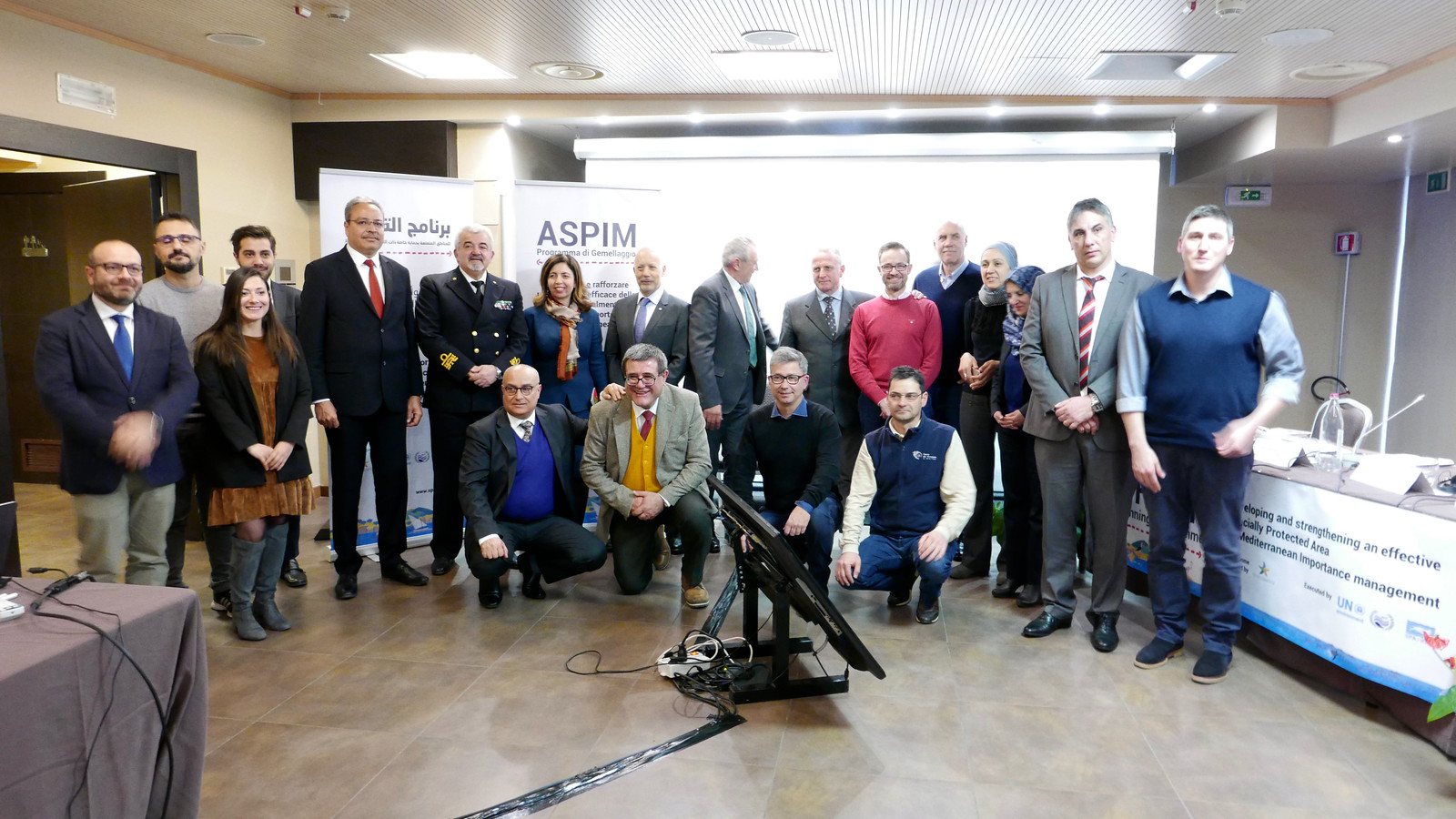
Italy supports the effective management of Specially Protected Areas of Mediterranean Importance
The kick-off meeting of the programme “Developing and strengthening an effective Specially Protected Areas of Mediterranean Importance (SPAMI) management”, was held in Torre del Cerrano, Italy on 26 February 2019.
The new programme represents a major component of the Bilateral Cooperation Agreement signed between the Italian Ministry of Environment Land Use and Sea (IMELS) and the UN Environment - Mediterranean Action Plan (MAP) – Barcelona Convention Secretariat, in support of MAP programme of work activities.
The twinning programme focuses on sharing of management and monitoring knowledge, building capacities of SPAMI managers, and supporting involvement of civil society, mainly through the twinning of Italian and other Mediterranean SPAMIs. Four SPAMI twinning agreements were signed during the event:
- Karaburun Sazan SPAMI (Albania) and Torre Guaceto SPAMI (Italy);
- Habibas Islands SPAMI (Algeria) and Tavolara – Punta Coda di Cavallo SPAMI (Italy);
- Strunjan Marine Protected Area (Slovenia) and Torre del Cerrano Marine Protected Area (Italy);
- Kneiss Islands SPAMI (Tunisia) and Egadi Islands Marine Protected Area (Italy).
During his opening statement, Mr. Gaetano Leone, MAP Coordinator, stressed the importance of the new Programme for the Mediterranean region, not only due to its expected contribution to the conservation of the marine and coastal biodiversity but also as a proof of the enhanced cooperative spirit among Mediterranean countries targeting the same objectives, which is the very essence of the MAP system.
In 2018, the marine area covered by conservation measures (MPAs and OECMs) in the Mediterranean has reached 226,000 km2, representing 8.97% of the Mediterranean Sea surface. This is considered a success for the region, showing increased efforts of the Parties, especially when compared with the respective figure of 4.5% in 2012.
However, the picture is not that encouraging when considering the actual management status of the protected areas. The 2017 assessment highlights that the management remains one of the weakest points in the Mediterranean, where it is estimated that only about 10% of the sites declared have a proper implementation of a management plan.
The creation, protection and management of Specially Protected Areas (SPAs) and the establishment of a Specially Protected Areas of Mediterranean Importance (SPAMIs) list are provided for by the SPA and Biodiversity Protocol, as main elements to ensure the safeguard of biological diversity in the Mediterranean. SPAMIs are sites (i) which are essential for biodiversity conservation of the Mediterranean, (ii) contain ecosystems specific to the region or include habitats of endangered species, (iii) are of interest at the scientific, aesthetic, cultural or educational levels.
The MAP system has come a long way toward meeting the objectives related to the conservation of the Mediterranean marine biodiversity, with the key contribution of SPA/RAC, which is mandated to support the Contracting Parties in the implementation of the SPA/BD Protocol. The new programme is expected to further link regional action with key global processes and initiatives and support the achievement of major global targets in the Mediterranean, mainly SDG 14 and Aichi Targets.
Note: This article was originally published on the UNEP/MAP website.
See the photo album of the meeting: https://flic.kr/s/aHsmBAjS7N
